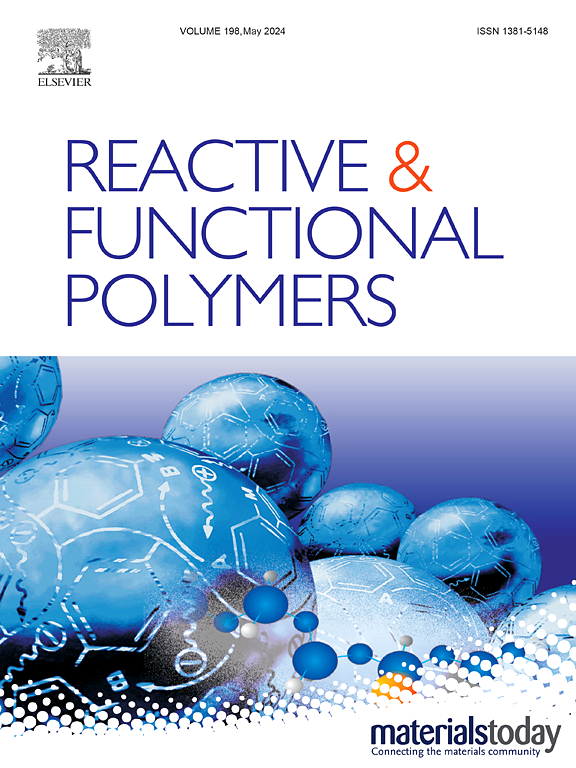Halogen- and phosphorus-free allyl bisphenol A epoxy resins with low flammability
IF 5.1
3区 工程技术
Q1 CHEMISTRY, APPLIED
引用次数: 0
Abstract
There are many concerns associated with high-valued applications of bisphenol A, especially for health and safety issues. Since its widespread use in epoxy resins, related functionalization upgrading has garnered a lot of attention. In particular, its high flammability poses a major risk to property and human safety. To reduce flammability, epoxy monomers, such as 2,2′-(((propane-2,2-diylbis(2-allyl-4,1-phenylene))bis (oxy))bis(methylene))bis(oxirane)(DBAQ) and 2,2′-(((propane-2, 2-diylbis(2, 6-diallyl-4, 1- phenylene))bis(oxy))bis(methylene))bis(oxirane)(DBAW) containing multiple allyls and epoxides have been fabricated and then cured using aromatic amines via a solvent-free process. Therein, structural modification was achieved via a concurrent ring-opening polymerization/olefin polymerization. All these networks displayed good mechanical properties and outstanding thermal stability. Most importantly, all thermosets exhibited excellent flame retardancy displaying a UL-94-V0 rating for combustion. Thus, a green protocol has been established for the generation of halogen- and phosphorus-free functional epoxy resins. It is believed that this approach may provide strong potential for sustainability in practical applications.

无卤无磷烯丙基双酚A环氧树脂,低可燃性
双酚A的高价值应用引起了许多关注,特别是健康和安全问题。由于其在环氧树脂中的广泛应用,相关的功能化改造引起了人们的广泛关注。特别是,它的高可燃性对财产和人身安全构成重大风险。减少可燃性、环氧单体,如2,2’- (((propane-2, 2-diylbis (2-allyl-4 1-phenylene)) bis(氧)二(二))bis(环氧乙烷)(DBAQ)和2,2’- (((propane-2, 2-diylbis (2 6-diallyl-4 1 -亚苯基)双(氧)二(二))bis(环氧乙烷)(DBAW)包含多个烯丙和环氧化合物捏造然后治愈使用芳香胺通过无溶剂的过程。其中,结构改性是通过同时开环聚合/烯烃聚合实现的。这些网络具有良好的力学性能和优异的热稳定性。最重要的是,所有热固性材料都表现出优异的阻燃性,燃烧等级达到UL-94-V0。因此,为生产无卤、无磷功能性环氧树脂建立了绿色方案。据信,这种办法在实际应用中具有很大的可持续性潜力。
本文章由计算机程序翻译,如有差异,请以英文原文为准。
求助全文
约1分钟内获得全文
求助全文
来源期刊

Reactive & Functional Polymers
工程技术-高分子科学
CiteScore
8.90
自引率
5.90%
发文量
259
审稿时长
27 days
期刊介绍:
Reactive & Functional Polymers provides a forum to disseminate original ideas, concepts and developments in the science and technology of polymers with functional groups, which impart specific chemical reactivity or physical, chemical, structural, biological, and pharmacological functionality. The scope covers organic polymers, acting for instance as reagents, catalysts, templates, ion-exchangers, selective sorbents, chelating or antimicrobial agents, drug carriers, sensors, membranes, and hydrogels. This also includes reactive cross-linkable prepolymers and high-performance thermosetting polymers, natural or degradable polymers, conducting polymers, and porous polymers.
Original research articles must contain thorough molecular and material characterization data on synthesis of the above polymers in combination with their applications. Applications include but are not limited to catalysis, water or effluent treatment, separations and recovery, electronics and information storage, energy conversion, encapsulation, or adhesion.
 求助内容:
求助内容: 应助结果提醒方式:
应助结果提醒方式:


